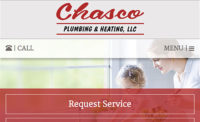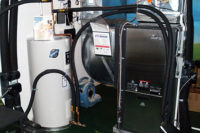It’s another year and it will soon be time again for more of the
hustle and bustle of contractor shows. It’s time to shake hands, meet new
business prospects and - most importantly - sell, sell, sell.
If you’re a contractor who plans on going to a local or regional
home and garden show in order to round up some new business, be sure to take
maximum advantage of your time at the show.
Make sure you bring plenty of business cards to a show. Obviously,
all the new business prospects you’re going to meet will want your card. In
addition, giving a card to a reporter or editor who may stop by will help him
or her to remember you and to spell your name right and use the correct title
if they should quote you in a story.
I once went to a show where a booth person said he forgot to
bring his business cards with him to the show. I don’t know if he was able to
sell anything. I also do not remember who he was.
When you’re going to a show, particularly a bigger show, be sure
to prepare a press kit. A regional show may have a press room where you can
place a batch of your press kits. If it’s a small table-top show, ask the show
organization if they’re expecting any media people to attend. If so, take along
some press kits and keep them in your booth.
When you prepare your press kit, either have a pocket-type folder
printed with your company name and the words “Press Kit” on the front of it.
Or, you can just buy some plain white folders and get labels printed with your
company name and the words “Press Kit.”
If you prefer, you can use the words “Media Kit” instead of
“Press Kit.” That term can be used to help attract online editors, TV and radio
people, bloggers, and others who don’t work with a paper publication. But all
of these folks will understand what the words “press kit” mean and they’ll
still take one.
Put paper press releases in your press kit. This allows for a
quick read of your material. But also make sure you include either a CD with
digital copies of your material - including the press release or releases, any
photos, PDF files of any brochures, copies of any videos, etc. - or include a
flash drive with this digital material.
We live in a digital age, so provide your material in digital
format. That makes it easier for a reporter or editor for a paper publication,
a reporter or editor for a digital publication, or a local TV or radio
reporter, to grab your information.
We no longer live in an age of typewriters. Everything is
digital. So go ahead and provide your material in digital format. (And, anyway,
you have to supply your video in digital format.)
If you write your press releases yourself (i.e., if you don’t use
an advertising/PR agency), write in the inverted pyramid style. That means you
put the most important information in the first paragraph, the next most
important in the second paragraph, etc. The least important information goes at
the bottom.
Do not bury your most important information in the fifth or sixth
paragraph after a long, rambling introduction. Get to the point. Tell the media
your important news first, then provide the background.
Ninety-nine percent of media people will not read paragraph after
paragraph to try to find the nugget of news in your release. (I’m part of the 1
percent that will try, but that’s only because I’m willing to spend an
extraordinary amount of time trying to find the news.)
Make it easy for the media to find and use your news and it’s
much more likely you’ll see it published in your local newspaper, in a trade
magazine, or picked up by a local radio or TV station.
Before joining the
editorial staff ofThe NEWSin 1996, Greg Mazurkiewicz worked in public relations and
advertising for more than 20 years. In this periodic series of articles, he
shares some of his expertise in the field of marketing communications.
Publication date:02/07/2011
Related Articles
Related Products
See More ProductsSee More ProductsEvents
View AllSubmit An Event-
December 10, 2024 Exploring Your Options: How Strategic Acquisition Can Secure Your HVAC Business’s Future
-
March 14, 2024 4 Ways to Make Your HVAC Business More Efficient
×
Copyright ©2025. All Rights Reserved BNP Media.
Design, CMS, Hosting & Web Development :: ePublishing









